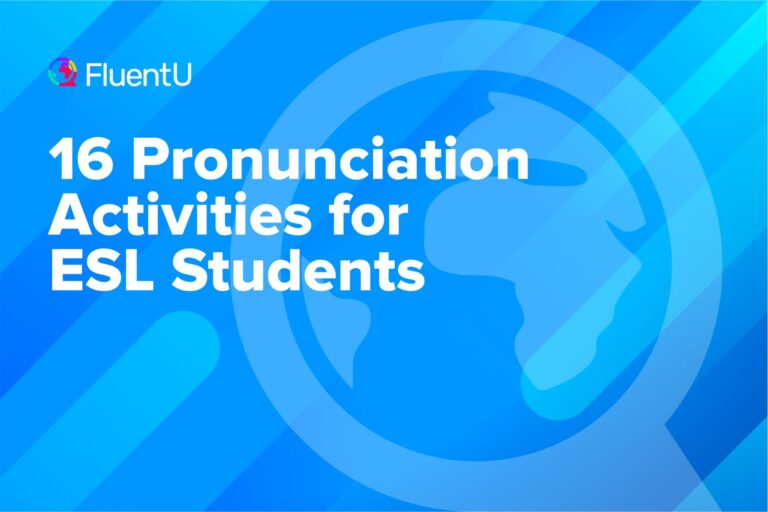How to Teach English Conditionals in a Fun Way

Conditionals are a crucial part of the English language, but teaching them to your ESL students can sometimes be challenging.
In this guide, learn how to teach conditionals in a fun way in ESL class with a range of tips and activities that can keep your lessons informative and engaging.
Download: This blog post is available as a convenient and portable PDF that you can take anywhere. Click here to get a copy. (Download)
Ideas for Teaching Conditionals in Your ESL Classes
Here’s a mix of different ideas that I’ve used successfully in my classes. I’ve gotten good feedback from my students about most of them, and I’ve personally enjoyed using them.
Use activities that let them speak more and learn the language naturally through experimentation. The following ideas for activities are versatile, can be modified according to what you think would work best for your class and can all be done in groups or pairs.
1. Make it strange or different
Conditional chains are a great warm-up exercise, and you can also expand them if you want. Think of weird scenarios to catch your students’ interest from the get-go. Have one student say a condition and a result. Then have the next student take the result from the previous student’s sentence and make a new condition from it, along with a new result.
For example:
Teacher: “If pigs could fly…”
Student A: “If pigs could fly, they would make nests in trees.”
Student B: “If pigs made nests in trees, the birds would get angry.”
Student A: “If the birds got angry…”
2. Make it mysterious
Give students 10 (or more) conditions and have them verbally complete the results for each (or vice-versa), but out of order so their partner doesn’t know the conditional that’s being completed. Again, making strange or funny scenarios helps keep their interest. Then, the students’ partners have to guess which condition the others are completing.
For example:
Student A: “If this happened, I would cry like a baby.”
Student B: “Hmm, would you cry like a baby if your favorite team lost?”
Student A: “No.”
Student B: “Would you cry like a baby if you failed English?”
Student A: “Yes.”
3. Make or use a game
If you’re a do-it-yourselfer, then by all means, you can make your own games. But if you’re pressed for time, BusyTeacher.org has literally hundreds of games, and many of them are specifically made for practicing conditionals, including this one for first and second conditionals, and this one for third conditionals.
4. Make them use their imaginations
Think of more scenarios and ask questions in a “What would you do if…?” format. They can interview partners, or write answers on papers and guess who would do what.
5. Make a wish
Show pictures of people in different situations. Have students imagine what the people wish or hope. You can also expand this by having them make full conditional sentences based on those wishes or hopes.
6. Make them choose
Ask them “Would you rather…?” questions, and then imagine the results if they chose either option. For question ideas, rrrather.com has some scenarios with pictures. (Just be warned that some will not be appropriate for classes and a few may even make you question humanity in general.)
Using Videos and Movies to Teach Conditionals in ESL Classrooms
I’m dating myself here, but back when I was in school, the best days were the days when we walked into a classroom and saw the cart with the TV and VCR on it. We can keep that spirit alive when teaching conditionals. The main question becomes whether you want to find sources that already have conditionals or make your own.
Finding sources that already have conditionals
This is sometimes a bit trickier, since you have to depend on material that you find “as is.” It may not always have exactly what you’re looking for. Still, here are two good general tips:
- Use music videos. (I’ll include song suggestions in the section below.) There are a ton of options here, and you can incorporate conditionals into your ESL classes in a way that’s fun and interesting, especially if you use a type of music that your students already like.
- Use movies. This might seem a bit daunting, at least if you think you need to show the whole movie. But generally you can just highlight a part of a movie for a specific purpose. For example, there’s a sequence about five minutes into “The Curious Case of Benjamin Button” in which Brad Pitt’s character uses the third conditional constantly. It’s basically the holy grail of movie clips for English teachers.
Making your own conditionals
- Pause to add conditionals. Pause movies or videos to ask things like “What might happen next if she goes into the room?” or “What would you do if you were her?”
- Watch news reports to predict the future. There are countless news clips online, ranging from international conflicts to weather reports to fluff pieces about cute puppies. Have your students predict what will or might happen in the future, or talk about how things would be different if something had happened differently before.
Great English Songs with Conditionals, and How to Use Them
You can’t please all the people all the time, especially when it comes to music. You’ll likely never find a song that every student in your class loves, but most of my students have at the very least tolerated all the songs below, and some students have even commented that they really liked some of them.
You can combine these songs with any of the techniques or activities mentioned above, depending on your needs. I’ll divide the list into the type of conditional highlighted in each song. Then, after the list, I’ll include a few more activity ideas specifically for songs.
Zero conditional
(Note: Many ESL curricula don’t even include zero conditional, and supposedly it’s hard to find songs that use it. Nevertheless, here are a few that I like.)
- “When the Angels Sing” by Social Distortion
- “If I Can’t Have You” by Yvonne Elliman
- “If I Like It, I Do It” by Jamiroquai
Between zero conditional and first conditional
- “If I Fall You’re Going Down with Me” by Dixie Chicks
- “If You Want My Love” by Cheap Trick
First conditional
- “Count on Me” by Bruno Mars
- “Time After Time” by Cyndi Lauper
Between first conditional and second conditional
- “If Tomorrow Never Comes” by Garth Brooks
Second conditional
- “If I Were a Boy” by Beyonce
- “Wouldn’t It Be Nice?” by The Beach Boys
- “If I Had a Million Dollars” by Barenaked Ladies
Between second conditional and third conditional
- “It Wouldn’t Have Made Any Difference” by Todd Rundgren
Third conditional
- “If It Hadn’t Been for Love” by Adele
- “If I’d Been the One” by 38 Special
Wishes
- “I Wish I Had an Evil Twin” by Magnetic Fields
- “Wishlist” by Pearl Jam
Ideas to incorporate songs into class
- Put yourself in the singer’s shoes. Have your students use conditionals to talk about what the singer was feeling, what he/she might do or what might have happened to him/her.
- Put yourself in the listener’s shoes. Same as above, but have your students do it from the perspective of the person the singer is singing to.
- Complete the conditions or results. After identifying the conditions or results in the song, have your students complete their own responses or conditions.
ESL Classroom Activities with Quotes Using Conditionals
I really like using quotes in my classes, and I’ve noticed that many contain conditionals. Due to the nature of conditionals, the English level in such quotes tends to be higher.
These kinds of activities can be very rewarding, since they can lead the class in new directions, including discussions about the people who said the quotes, interpretations and debates about the quotes, viewpoints regarding philosophy and many other discussions that lower-level topics aren’t conducive to.
Here are some activities that I like to do to incorporate quotations with conditionals into my classes.
Matching
Print a large number of quotations—between 20 and 30 quotes seems to work best—and cut them into two parts each, dividing the conditions and the results.
You can also mix different conditional tenses to make it more or less challenging. Have students match the two halves of the quotes.
You can also expand the activity by having them find information about the person who said it, argue for or against the quote or do a different activity to increase participation. BrainyQuote.com has hundreds of quotes that use conditionals, but here are a few I like to include:
- (First half A): Even if I knew that tomorrow the world would go to pieces, …
- (Second half A): …I would still plant my apple tree. – Martin Luther
- (First half B): If you have no critics, …
- (Second half B): …you’ll likely have no success. – Malcolm X
- (First half C): I have found the paradox, that if you love until it hurts, …
- (Second half C): …there can be no more hurt, only more love. – Mother Teresa
Scrambled quotes
Print and cut a quote into pieces, and have students arrange it in the correct order. You can have each word on a separate bit of paper, or have phrases of a few words on every piece. For lower levels, you can also cut it up like a puzzle.
One of my favorite quotes is by Pablo Picasso and uses the first conditional in a way that’s clear and repetitive, which helps reinforce the structure:
My mother said to me, “If you are a soldier, you will become a general. If you are a monk, you will become the Pope.” Instead, I was a painter, and became Picasso.
Dictations
Have students work in pairs or groups of three. Give a quote to one student, who has to tell it to the second student. The second student then has to run across the room and tell the quote to the third student, who writes it down piece by piece.
You can also have them do a dictation back-to-back or, if you’re daring and feel like riding a wave of barely-controlled chaos, have them say/shout the quote across the room to their partners.
A good example here is a quote by Sidonie Gabrielle Colette, which is partially fun just because her name is challenging to spell:
What a wonderful life I’ve had! I only wish I’d realized it sooner.
Completing quotes
Perhaps you remember the game Mad Libs. In that game, you had a story with multiple blanks, and you only knew what part of speech was missing (e.g., you’d need to say an adverb, and the person taking notes would write the adverb you said into the story).
The result was often bizarre or nearly incomprehensible, but every now and then, it was hilarious.
How about an example? Here is a longer quote that you can convert for this game, but really any quote can work. I’ll give you one that you can try right now.
OK, I’ll need:
- (1): An action in a daily routine.
- (2), (5), (8), (11) and (14): Five sensations/emotions.
- (3), (4), (6), (7), (9), (10) and (12): Seven body parts.
- (13): A gerund (-ing) action verb.
- (15): A person.
Now, plug them into the following quote:
If I could have just one wish, I would wish to (1) every day to the (2) of your (3) on my (4), the (5) of your (6) on my (7), the (8) of your (9) on my (10), and the (11) of your (12) (13) with mine…knowing that I could never find that (14) with anyone other than (15).
– Courtney Kuchta
If you want to use that quote, the original is:
If I could have just one wish, I would wish to wake up every day to the sound of your breath on my neck, the warmth of your lips on my cheek, the touch of your fingers on my skin, and the feel of your heart beating with mine…knowing that I could never find that feeling with anyone other than you.
But I do hope that this guide will be useful and help you with your lesson plans.
And remember: If you make it fun and interesting for your students, it will be fun and interesting for you, too.
Download: This blog post is available as a convenient and portable PDF that you can take anywhere. Click here to get a copy. (Download)
And One More Thing...
If you like learning English through movies and online media, you should also check out FluentU. FluentU lets you learn English from popular talk shows, catchy music videos and funny commercials, as you can see here:
The FluentU app and website makes it really easy to watch English videos. There are captions that are interactive. That means you can tap on any word to see an image, definition, and useful examples.
For example, when you tap on the word "searching," you see this:
Learn all the vocabulary in any video with quizzes. Swipe left or right to see more examples for the word you’re learning.

FluentU helps you learn fast with useful questions and multiple examples. Learn more.
The best part? FluentU remembers the vocabulary that you’re learning. It gives you extra practice with difficult words—and reminds you when it’s time to review what you’ve learned. You have a truly personalized experience.
Start using the FluentU website on your computer or tablet or, better yet, download the FluentU app from the iTunes or Google Play store. Click here to take advantage of our current sale! (Expires at the end of this month.)










